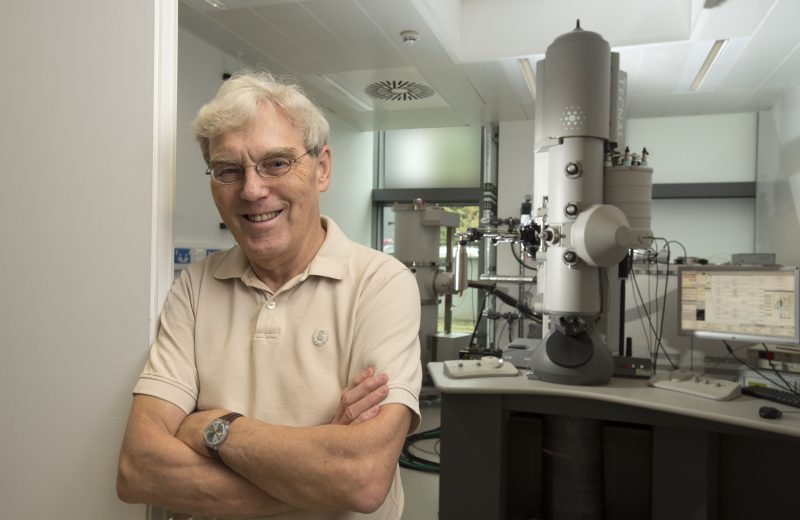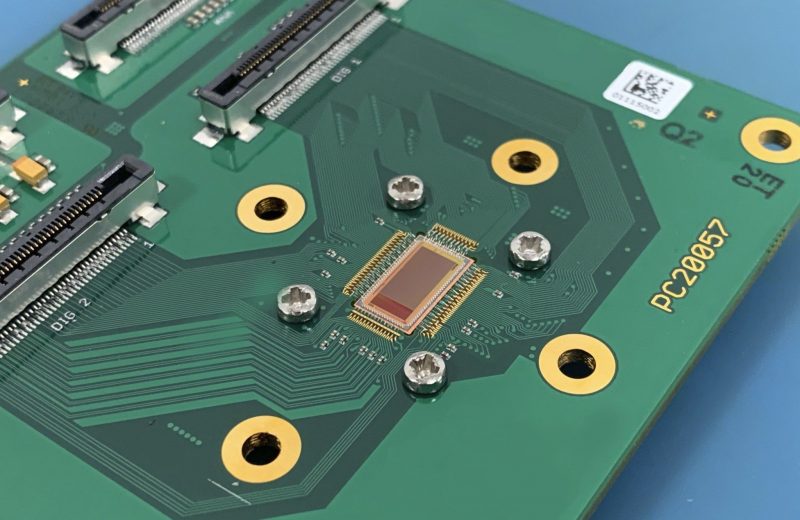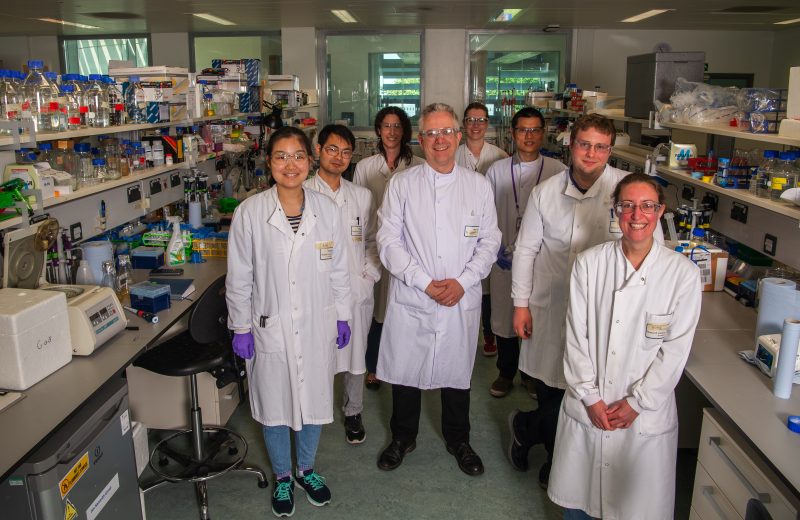Opening up cryoEM: The Rosalind Franklin Institute commits to fund new detector for lower energy cryoEM
The Rosalind Franklin Institute has committed to developing a multi-million pound technology which enables a more accessible form of electron cryo-microscopy.
The development project is part of a new initiative in collaboration with Nobel prize winner and cryoEM pioneer Dr Richard Henderson and his colleague Dr Chris Russo, both from the MRC Laboratory of Molecular Biology (MRC LMB) in Cambridge.
The goal of the project is to develop a detector which can work at a much lower energy, 100 keV, versus the current industry standard 300 keV, to obtain atomic scale images of biological samples.
Crucially, the new detector will produce better data from the lower energy, 100 keV microscope than existing detectors working with higher energy microscopes.

CryoEM currently requires large and expensive technology, which is housed in highly specialist environments. Lowering the energy of the electrons enables the use of a simpler, and cheaper, electron gun. The new detector, named C100, is the critical first step in this democratisation of the method.
The ultimate aim is to encourage faster scientific progress by bringing a quick, simple and reliable cryoEM to medical research laboratories and drug companies around the world, allowing a massive shift in the accessibility of this revolutionary technique.

In the UK, for example, at the national cryoEM facility, there is a six week wait to get any time on a 300 keV microscope, and a very significant amount of preliminary data is required.
Making the technique accessible to more people increases the opportunities for new advances, says Dr Henderson: “Bringing down the barriers to access these microscopes means we can bring cryoEM to many, many more academics around the world so they can look at samples in more detail, try new approaches and improve our understanding of human diseases.”
The development of this new detector builds upon earlier proof-of-principle work at the MRC LMB. Assisted by LMB’s scientific workshop, Dr Russo’s group built a prototype 100 keV microscope that resolved five structures in seven days, but it was clear that an optimised detector was required to fully realise the potential of the new microscope design.
The Detector and Electronics Group at the Science and Technology Facilities Council have been selected as development partners.
The project is supported as a key component of the Structural Biology theme at the Rosalind Franklin Institute, funded through UK Research and Innovation by the Engineering and Physical Sciences Research Council. The Franklin’s mission is to develop and apply disruptive new technologies in the physical and engineering sciences to transform the UK’s life science research and pharma sector. Creating new drugs has never been slower or more expensive, but the need is growing faster than ever. The use of cryoEM to study biological samples – the development of which won Dr Henderson his Nobel Prize – is a key technology in the process.
Professor James Naismith, Director of the Rosalind Franklin Institute says: “When Richard first told me about their idea for a revolution in accessibility of cryoEM I knew this was exactly the kind of problem that The Rosalind Franklin Institute exists to help solve. C100 is a perfect example of paradigm shifting innovation in life sciences.”

LMB Director Jan Löwe commented, “Making cryo-EM better and more accessible will enable it to be used by everyone to understand biological mechanisms and diseases, and to develop drugs more easily, even when the most complex and currently intractable molecules are involved. Decades of development at LMB and collaboration with STFC have helped create this truly unique opportunity. We are very excited for The Rosalind Franklin Institute to join in to take this work to the next level, given the Franklin’s strong focus on the interface of physics and engineering to enhance biomedical sciences.”
